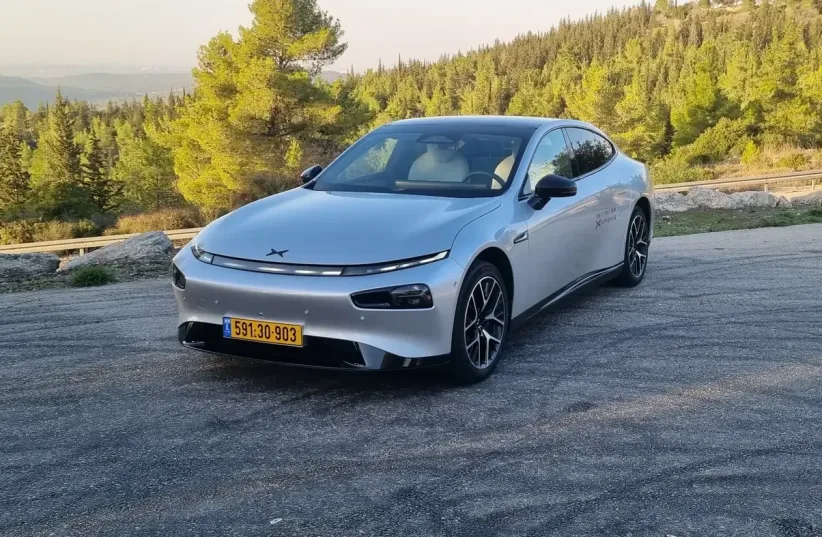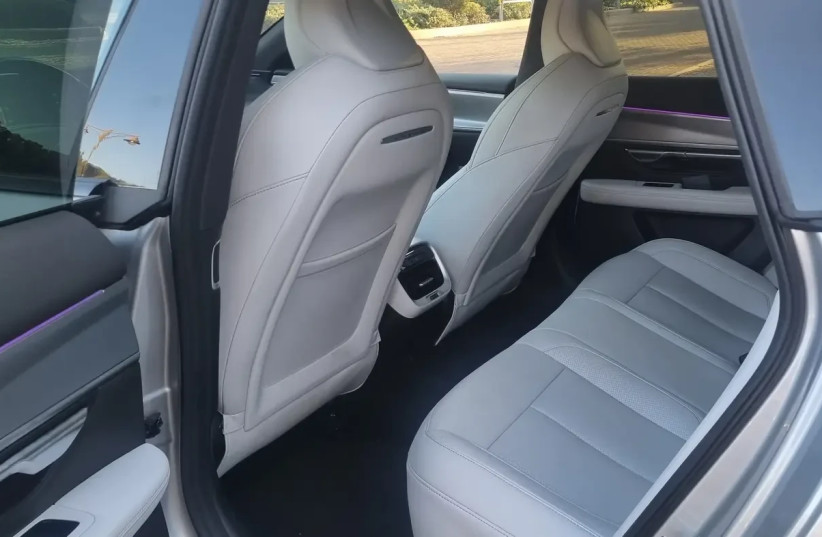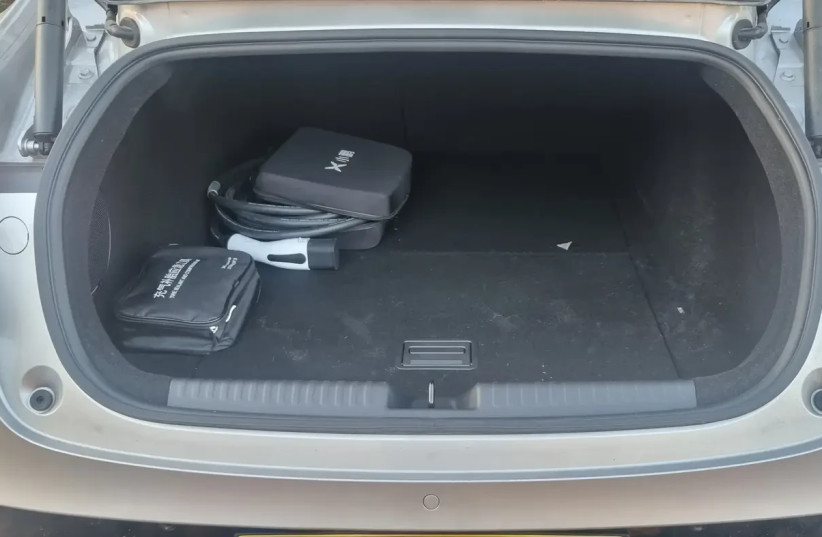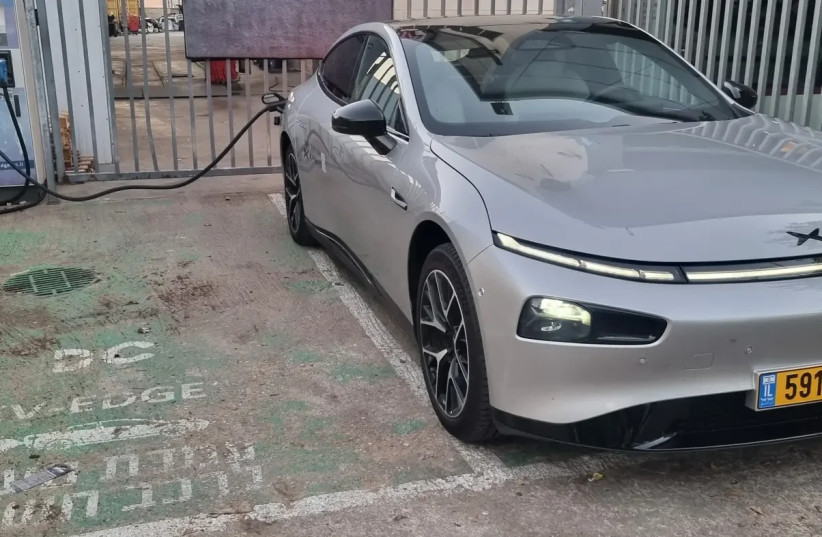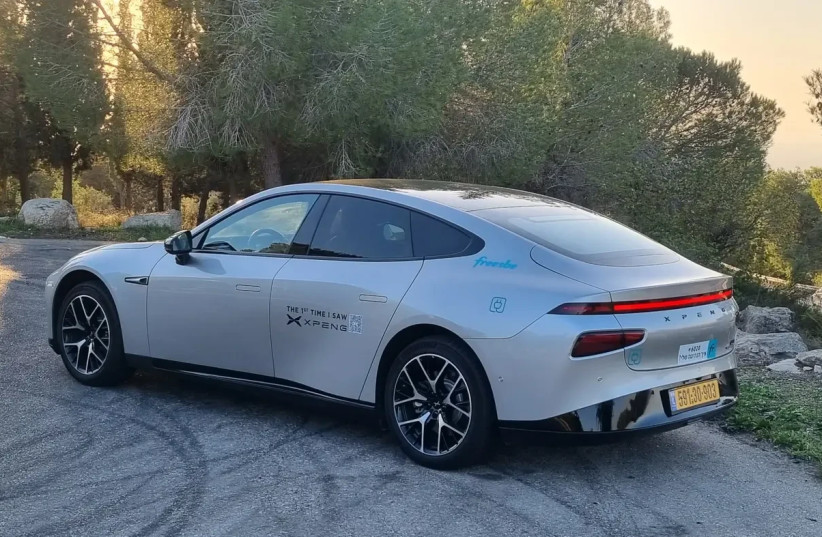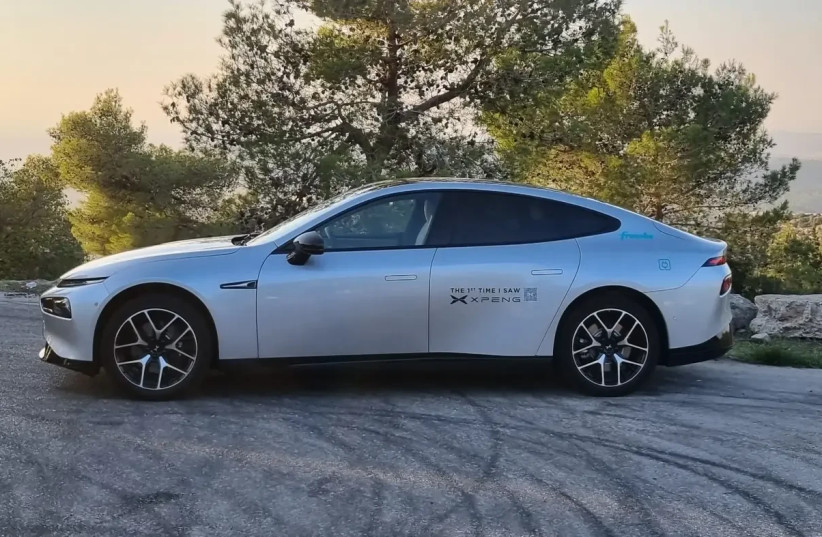Price: NIS 280,000
Competitors: Tesla Model 3, Hyundai Ioniq 6, BYD Syl
Liked: Design, performance, long warranty for the car
Disliked: Human engineering and full operation through the screen, price in the performance version
Rating: 8/10
It used to require James Bond skills to pull this off. Now, I can comfortably step out of the Xpeng P7 without being 007, pull out my mobile phone, tap the arrow on the manufacturer's app, and watch the empty car reverse.
Here, the aim isn't to escape under fire from a villainous tyrant, but to be able to park the car in a tight spot where I can't open the driver's door. Until one of the local cybersecurity experts bypasses the P7's limit, it moves at a speed of up to 10 km/h and up to a distance of just 10 meters - still as cool as playing with a remote-controlled toy car.
The new Chinese electric sedan is one of the first to arrive with the ability born in the era of parking crunch and TikTok videos. Another expression of Xpeng's technological capabilities, a startup reminiscent of Tesla, founded just 10 years ago and sold 142,000 cars in 2023. The P7 is its answer to the Model 3, alongside the G9 crossover, closer in dimensions to the BMW iX3 but significantly cheaper.
Later this year, the importer Prisbi will also launch the G6, Xpeng's answer to the Model Y and the abundance of European and Korean crossovers. But until then, this is the cheapest model in the manufacturer's lineup in the country, which has already delivered almost 800 cars in less than half a year.
Design: The inspiration from Tesla Model 3 is clear, but Xpeng manages to look a bit more luxurious, with a long sports sedan configuration but a somewhat anonymous front. In this version, you can get front doors that open upwards as an option, for the ultimate attention grabber.
Interior: The interior designers have also seen, and perhaps more than once, the Model 3. The driver's environment is clean, perhaps too clean, with all system operations done from the 15-inch screen, just as impressive in the showroom, but confusing and dangerous on the road. There's no reason to hide climate control, mirrors, and climate control settings there. As a compensation, controlling the air conditioning from buttons on the console is less convenient and requires adaptation. At least the driver has their own 10.5-inch screen, which isn't available in the Model 3.
The material quality is good, and as usual today, there's ambient lighting that allows for personalized lighting design, but Xpeng also copied Tesla's decision to forego a retractable roof cover. You'll pay the price in the summer.
The seating position reiterates the sporty message: it's low, which is felt even upon entry and exit. The seat is comfortable, but the headroom isn't generous for taller drivers.
Legroom at the back is generous, but here too the seating position is low, and headroom is limited.
The cargo space has a capacity of only 440 liters, and the charging port is large.
Equipment: 15-inch multimedia and instrument cluster screen with voice and without Android Auto and Apple CarPlay, 19-inch wheels, panoramic roof, electrically adjustable driver and passenger seats, wireless charging for mobile phones, smart key. For an additional 20,000 shekels in the Diamond package, you get Nappa leather upholstery, ventilated sports seats, and an upgraded Dynaudio stereo.
Safety: Autonomous emergency braking, adaptive cruise control, lane-keeping assist, off-road vehicle monitoring, automatic high beams, alert for opening a door on a busy road.
Performance: Again, like Tesla, there's no gear lever or start button. Did you unlock the car? It starts. With 472 horsepower from two engines, one on the front axle and the other on the rear, power is the last thing missing from this car, even in 'normal' mode, which saves a bit of electricity for range. Getting out of place is relatively refined anyway, with the 'Sport' mode already sticking the back to the seat.
Range and Charging: As usual, forget about the manufacturer's data. Especially in an electric car with such performance. In driving that included many calm segments but also plenty of accelerations and aggressive driving in the hills of Jerusalem, the real-world range was about 400 kilometers. There's not really a situation of one-pedal driving that allows for maximum regenerative charging, which could help extend the range.
Fast charging is possible at a rate of 175 kilowatts, compared to 250 kW in a Tesla. Slow charging - at 11 kW.
Comfort and Behavior: With a weight of 2.2 tons, the Xpeng relies on its engine power for sportiness, not on a lightweight chassis. This is felt as the road twists. There's almost no body roll, but acceleration in corners can cause the tail to step out even when the driver didn't plan it, and it takes time for stability control to intervene. The steering lacks feeling and its accuracy is average. Braking is good.
Ride comfort is relatively reasonable given the low-profile tires and stiff suspension tuning aimed at balancing the weight. The comfort isn't outstanding on wavy or urban roads. Noise insulation could have been better.
Bottom line: The increase in the purchase tax on electric vehicles set the performance at NIS 280,000, an increase of NIS 13,000 compared to the original price. The P7 has the equipment and design that can justify the luxurious branding, but to complete it, there will also be a need for service quality and customer satisfaction, which will take time to build. The human engineering suffers from the same flaws as other Chinese.
The price is low compared to European electric sedans, but the real deal is in the entry-level version, which relies on a rear motor only, with 276 hp, enjoys an improved official range of 576 km, and has a much competitive price tag of 210,000 shekels.
Technical Specs: Xpeng P7 Performance
Engines: Two, maximum power 473 hp, maximum torque 77.2 kgm
Transmission: Auto, direct drive
Drive: Dual
Battery: 82.7 kWh
Maximum Charging Rate: 175 kW
Dimensions:
Length (m): 4.88
Width (m): 1.90
Height (m): 1.45
Wheelbase (m): 3.0
Weight: 2,215 kg
Tires: 245/45R19
Performance (manufacturer):
0-100 km/h (seconds): 4.1
Top Speed (km/h): 200
Combined Range: 505 km
Safety:
European crash test rating: 5 out of 5 stars
Active safety: Autonomous emergency braking, adaptive cruise control, lane-keeping assist, off-road vehicle monitoring, automatic high beams, alert for opening a door on a busy road
Warranty:
7 years or NIS 160,000 for the car, 8 years or NIS 160,000 for the battery.
